Terracottas
The terracottas, plaques as well as figurines in the round, are a typical feature of the excavation and investigation of Isin, a city of huge importance especially in the 2nd mill. BCE, having produced a great number of these informative and detailed pictures.
Subjects include religious and domestic themes as well as animals; some terracottas have erotic illustrations.
Deities: Ancient Mesopotamia knew gods not only in the shape of monumental statues in temples, but also as private tutelary gods. These were used as motives on terracotta reliefs. Mythological creatures were also illustrated like the so-called Gilgamesh. Typical of the representation of gods were the pairs of horns on the headdress.
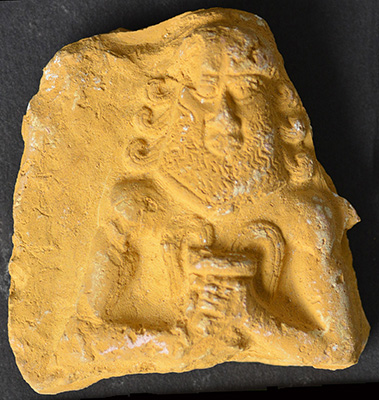 IB 1913
IB 1913
The „Laḫmu“ Hero wears his hair arranged symmetrically. The vase between his hands is indicating his association with the god Ea.
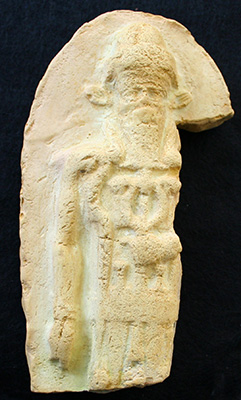 IB 1574
IB 1574
The hybrid creature has bull‘s ears and wears a horned cap.
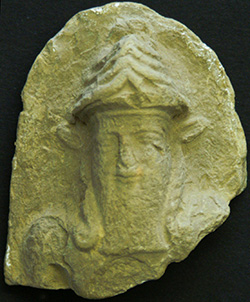 IB 1431
IB 1431
The bearded deity wears a horned cap with four rows of horns on each side.
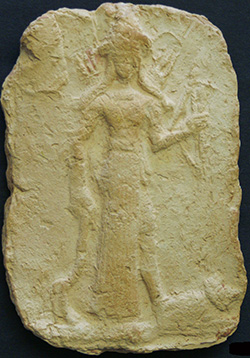 IB 1205
IB 1205
Ishtar as a warrior is characterized by many weapons.
The representation of the king could be unambiguous as well: He either wore the broad-rimmed headdress or the "Falbelgewand", that would make him distinguishable as the ruler.


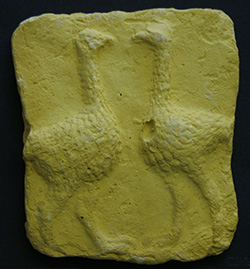 IB 1405
IB 1405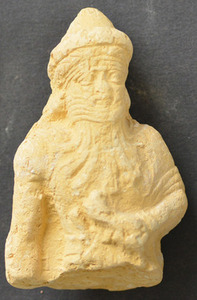 IB 1436
IB 1436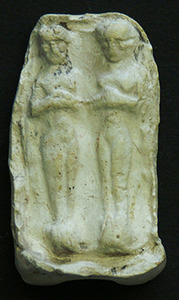 IB 302
IB 302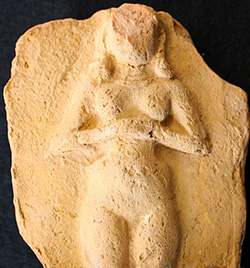 IB 1251
IB 1251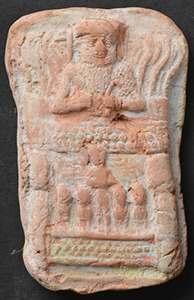
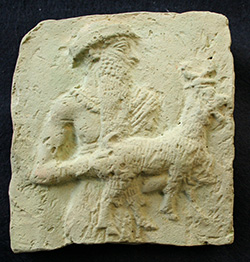 IB 1875
IB 1875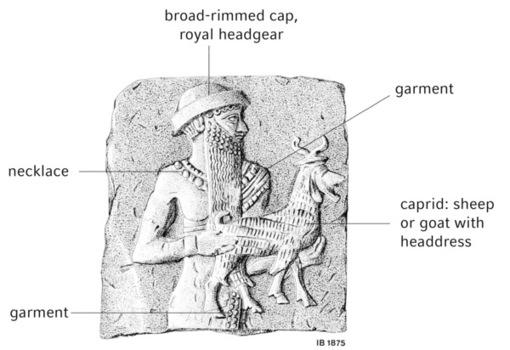 The sacrificer is identified by his typical headgear and rich outfit as the king.
The sacrificer is identified by his typical headgear and rich outfit as the king.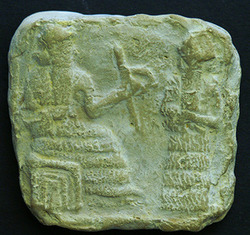 IB 1956
IB 1956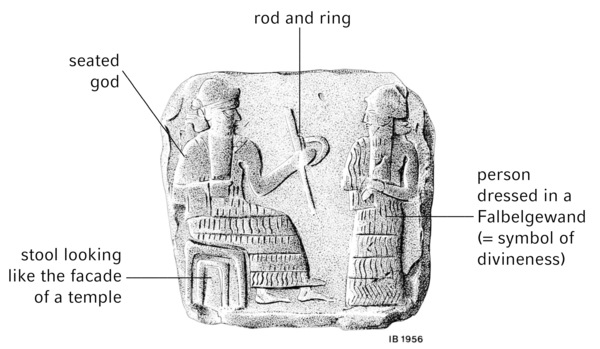 The deified king, characterised by his garment, is facing a seated divinity holding the signs of power: rod and ring.
The deified king, characterised by his garment, is facing a seated divinity holding the signs of power: rod and ring.